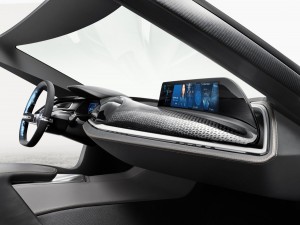CES ’16: Toyota Discusses the Hardest Part of Developing Autonomous Car Technology
Jennifer van der Kleut
Toyota is looking to join the autonomous car race, as is obvious by the fact that they have invested $50 billion in the Toyota Research Institute (TRI), with facilities near their partners Stanford on the west coast, and MIT in the east.
At CES 2016 this week, Dr. Gill Pratt, CEO of TRI, discussed the biggest obstacle automakers like Toyota are facing in developing the safest and most efficient autonomous technology.
During his talk, AutoWeek reported, Pratt said it’s fairly easy to anticipate erratic behavior from pedestrians or cyclists, and to program an autonomous car to act accordingly. But how does one anticipate that which cannot be anticipated?
One example he offered was debris falling off a truck-should a car treat the debris like a pedestrian or cyclist, or like another car? What if the debris breaks into many pieces when it hits the ground-is it then like many pedestrians, or many cars? What is the best way for autonomous car to react and respond?
Pratt said automakers struggle with such scenarios, and others “we haven’t thought of yet.”
Toyota has been wowing crowds at CES (Consumer Electronics Show) this week by showing off a few concept machines that demonstrate its work in hydrogen power, USA Today reports.
In the autonomous car field, the automaker has an exhibit at the show that features small, model-sized autonomous cars driving around a miniature fake cityscape. The exhibit shows off the progress the automaker is making in connected-car technology, working toward allowing cars to communicate with each other on the road without any human interaction.
AutoWeek reports that TRI is currently focusing on two main projects-“Uncertainty on Uncertainty” and “The Car Can Explain.”
The “Uncertainty” project focuses on anticipating unforeseen circumstances such as the theoretical debris fall mentioned above.
“The Car Can Explain” aims to ask an autonomous car why it responded to an incident a particular way.
“Autonomous cars have the power to make life or death decisions, so they must be capable of explaining those decisions,” AutoWeek reports he said in his CES talk. “When the car does something unexpected, it needs to tell us exactly why that happened. Cars will become more intelligent in that way.”
Pratt said Toyota already has millions of autonomous car miles under its belt, but its goal is trillions, as Toyota cars reportedly drive approximately one trillion miles per year around the world.
“We may be 95 percent of the way to full autonomy, but that doesn’t mean the last 5 percent will be as easy as the first 95 percent,” Pratt reportedly said. “It’s like climbing a mountain, where the final ascent is the hardest.”

 l as the noticeable lack of certain expected features:
l as the noticeable lack of certain expected features: